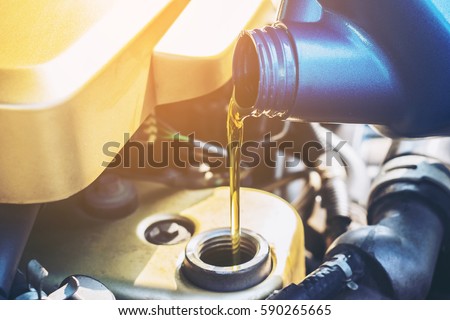Engine Oil Viscosity Standards and Their Impacts in Engines


Most people sees nothing wrong in the viscosity of an engine oil when buying it, however; the enlightened ones try to understand while some oil is so light and flows easily and makes research to know the reason and its possible effects to the engine.
We shall be discussing engine oil viscosity extensively for the purpose of individuals who might be wondering while all engine oil viscosity is not the same.
Straight lubricating oil becomes thick and stodgy at low temperatures, but gets very much thinner when it is hot.
The thickness or body of the oil is called its viscosity and it is expressed as a number prefixed by the letters SAE which stand for the society of automotive engineers, the American Organization that devised viscosity standards.
Since oil viscosity alters according to the temperature, two standards are popularly used, one indicating viscosity and the other when the oil is cold.
The working viscosity is calculated with the oil at 990C (2100F), and the grade of oil is written SAE 20, 30, 40 or 50. The higher the number, the thicker the oil.


Engine oil with a very good high-temperature viscosity works well in warm climates, but when the air temperature drops below freezing it thickens and puts so much drag on the moving parts that the starter has difficulty in turning the engine.
For the improved cold-starting an oil with a good low temperature viscosity is needed.
These winter-grade oils have their viscosity checked at- 180C (00F) and their grade is written with a W suffix, SAE 5W, 10W and 20w, to indicate this.
The snag with these very thin oils is that once the engine has started and reached operating temperature, they become so thin that they sometimes allow metal-to-metal contact.
The breakthrough came when technologists developed best of both worlds. An SAE 20W/50 oil, for instance has the cold-weather fluidity of a 20W winter grade oil, and the body of a straight SAE 50 at 990C.
Though it appears from figures that the oil actually gets thicker as it heats up, this is not so; a multigrade just becomes thinner more slowly than a monograde oil.
The need to conserve energy has led to the development of low-viscosity oils. Although these are multigrades, they are made deliberately thin so they cause minimum drag on moving parts.
On an engine in good condition, controlled tests show that using an SAE 10W/30 low-viscosity oil results in a 5% to 7% improvement in fuel consumption.

On a worn engine, the economy is not as good. Worn piston rings and bores result in oil getting past and burning in the combustion chamber. The increased oil consumption will more than offset any fuel savings. An engine in this condition is better off with SAE 20W/50 multigrade oil.
